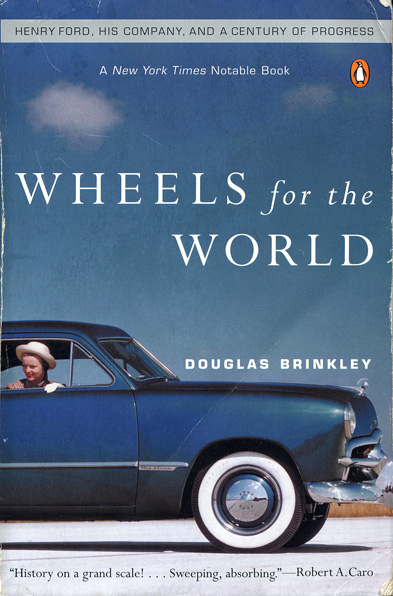Henry Ford: Hell on Wheels
- by Bruce E. McKinney

The history of Henry Ford is the history of America in the 20th century.
A review by Bruce McKinney
Recently I read Wheels for the World, a biography of Henry Ford and a history of the Ford Motor Company by Douglas Brinkley who has written more books than Zsa Zsa had husbands. This book was written with the support and cooperation of the Ford family with the understanding that the story would be a balanced account. The Ford saga is a complex one and the book is 764 pages of primary text to which is appended 90 pages of notes, bibliography and index. For the first 500 pages it is the history of Henry Ford and it then continues on to tell the story of the firm with an emphasis on the firm's leadership. It is not, in the final analysis, a story about cars and trucks. It is a story about people and one person in particular. The book was released as Ford Motors prepared to celebrate its 100th anniversary in 2003.
Most of what you "know" about Henry Ford is probably not going to be confirmed in this book. This is the 21st century and we don't hold much back anymore though, by television standards, this book is down right polite. This is the “many sides” of Henry Ford though some of the more difficult aspects of Henry Ford are alluded to but not explained.
Henry Ford was born in what is today Dearborn, Michigan during the Civil War in the same month the Battle of Gettysburg was fought: July, 1863. He grew up on a farm during the heady decades following the Great War as America was beginning to embrace the role of world leader. In the final decades of the 19th century all things seemed possible to the nation and to Henry Ford in particular. He believed in possibilities. As the American century was looming he was tinkering with the horseless carriage. He was not its inventor though in time he would become its "perfecter". By 1905, after an initial failure, he was building "Fords," one of more than 2,000 automotive brands that would be built at the dawn of the automotive age. Among car builders he alone had a unique and absolutely correct concept about how to build, not only cars but also, his company. He would seek the maximum market when others sought the maximum profit. Today it sounds logical but it was revolutionary then. This man could build cars. He would also build a business.
In time, in the quest to increase production and lower selling prices so to find the broadest possible market, he developed the concept of the assembly line, an incalculable advance in manufacturing technique. Previously, parts to build a car arrived around a chassis in a star pattern where piece by piece they were bolted together to make a finished vehicle. He, his staff and engineers determined that a chassis moving down a line from work station to work station could simplify, improve and speed up the assembly process. With the implementation of this concept the modern manufacturing era was born.